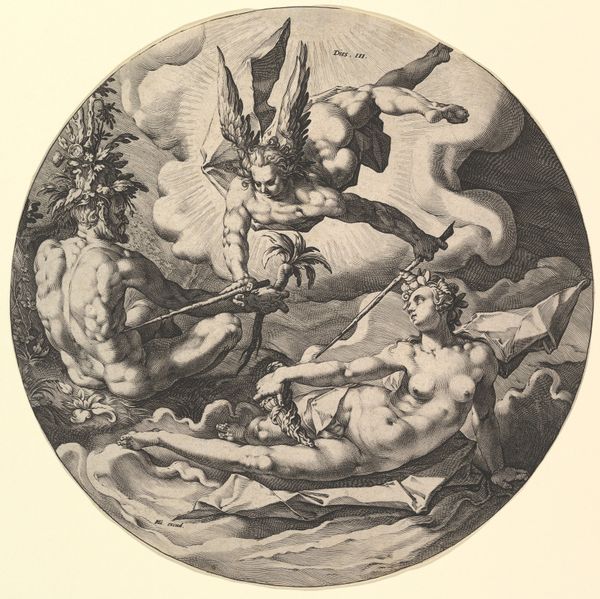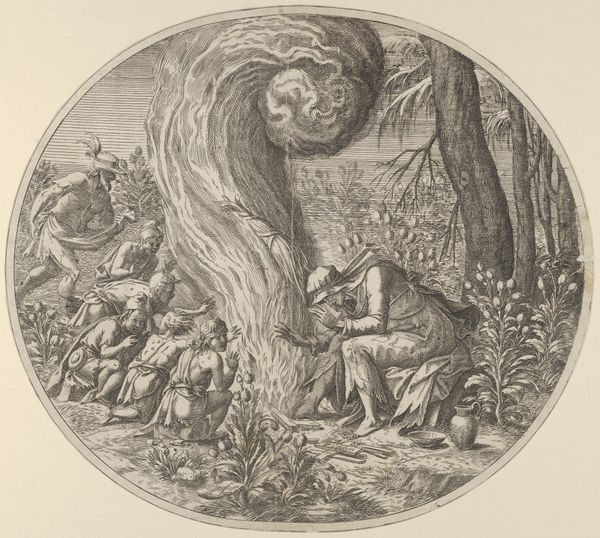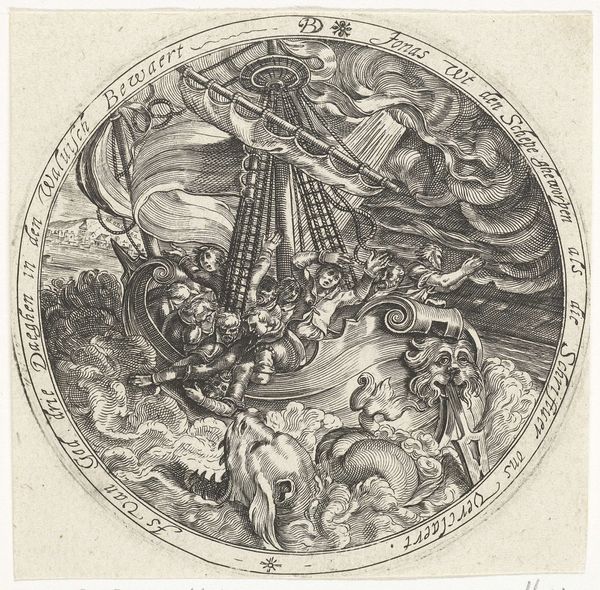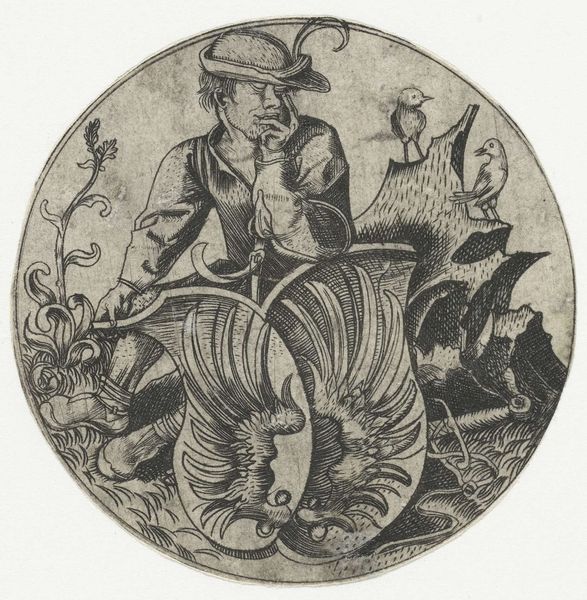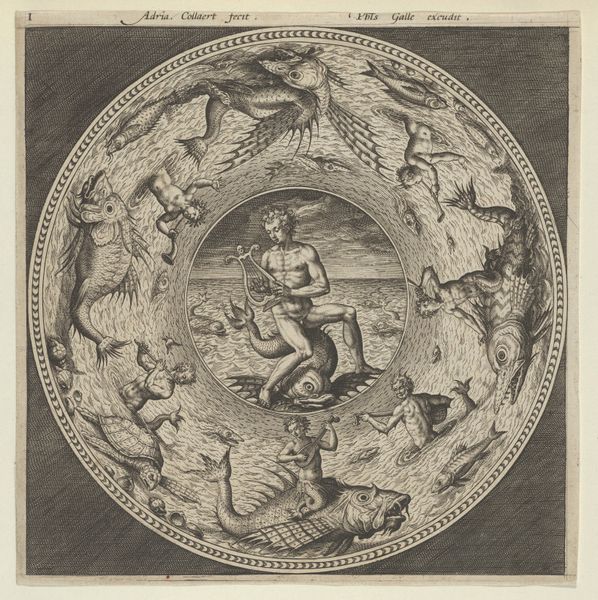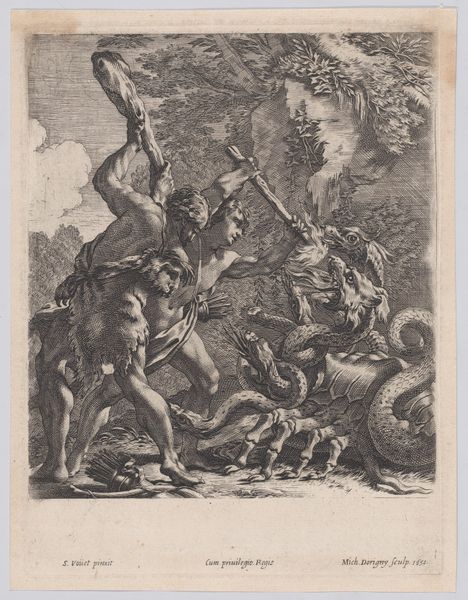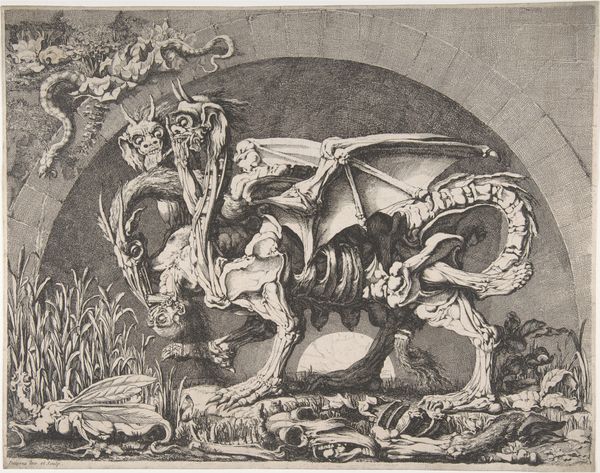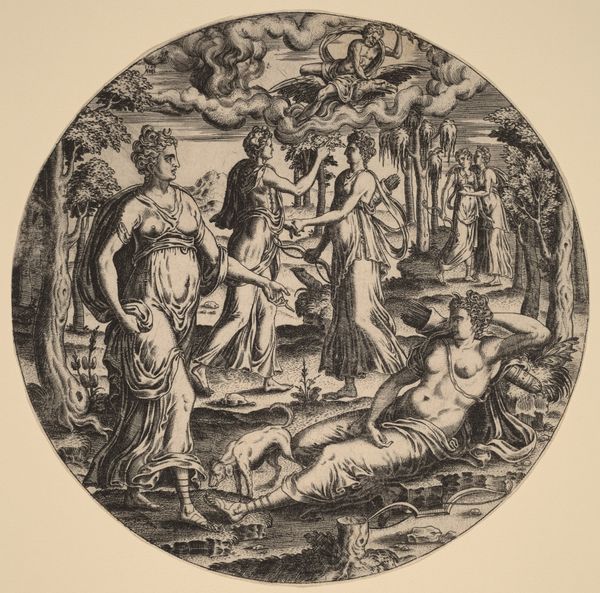
drawing, print, intaglio, engraving
#
drawing
#
allegory
# print
#
intaglio
#
dog
#
old engraving style
#
bird
#
mannerism
#
history-painting
#
engraving
Dimensions: Sheet (trimmed/oval): 10 5/8 × 11 13/16 in. (27 × 30 cm)
Copyright: Public Domain
Curator: Just look at this! A whirlpool of despair captured in ink. Editor: Yes, the visual chaos is immediately striking. What are we seeing? Curator: This is "Envy, from the 'Seven Deadly Sins'," an engraving made between 1545 and 1560. It's currently held at the Metropolitan Museum of Art. The artist is Léon Davent. Editor: The old engraving style amplifies the grotesque imagery, wouldn't you agree? All these writhing bodies... it feels incredibly violent. Curator: The artist clearly intends to disgust. Look at how Envy, personified as a monstrous hag, is being devoured by serpents and surrounded by symbols of greed and bitterness. It's a potent warning. There is a tail also in this monster body. Editor: And the landscape itself seems to mirror this inner torment. Twisted trees, dark clouds, and those ominous birds circling overhead – even a devil on the ground is trying to get something out of the naked person that seems on the ground. Curator: Indeed, the visual language reflects the internal state. The composition guides the eye from the serene figures at the top, presumably representing virtue, down into the spiraling depths of sin. Editor: The religious implications are unmistakable; and, even though the moral lessons is important, what social and cultural concerns in early modern Europe fed into this visual manifestation of envy? Was it simply religious instruction? Curator: Certainly, the church played a vital role, but anxieties surrounding social mobility, wealth disparity, and courtly intrigue likely fueled its wider appeal. Envy as a societal ill. And to contrast it, we can see the line of happy, harmonic people in the clouds, above it all. Editor: Right. What makes it particularly resonant, for me at least, is how it reflects a persistent human struggle. Envy never really goes out of style, does it? Curator: Sadly not. A timeless reminder, even rendered in this dated aesthetic, of our darker inclinations. Editor: A powerful and disturbing piece—a visual history of one of humankind's more unfortunate traits.
Comments
No comments
Be the first to comment and join the conversation on the ultimate creative platform.
